Automating Affiliate SEO Keyword Research
contentdistribution.com has taken 4 projects from approximately zero organic visitors per month, to more than 100,000 organic search visitors per month.

The fastest one went from 0 to 479,000 visitors per month in just 16 months.

Combined, these projects have nearly 100,000 keywords on page 1.
None of these sites spent more than $1,000 on backlinks.
And one of the sites is a DR9.

The thing all of these projects have in common.
We used ClusterAi.
ClusterAi is a keyword grouping tool that clusters large lists of keywords into unique content topics.
ClusterAi allows us to do perfect affiliate keyword research.
Every.
Single.
Time.
And when you do perfect keyword research, your content ends up outranking competitors with higher authority, more backlinks, and bigger marketing budgets.


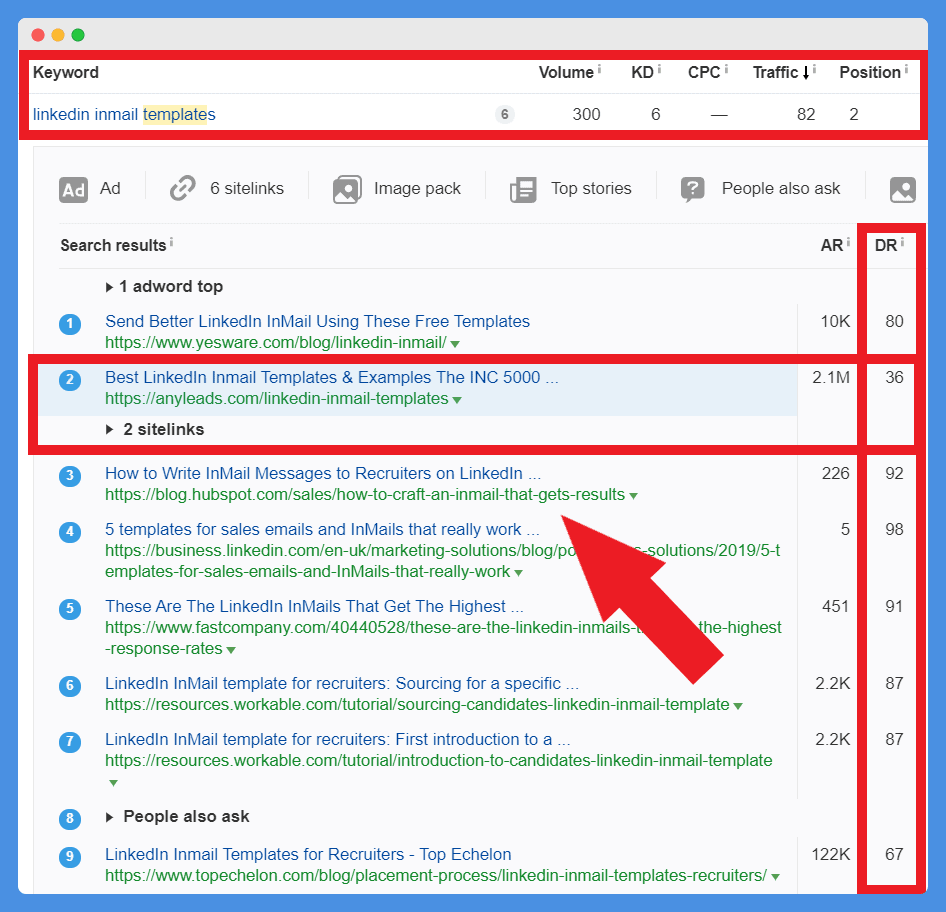
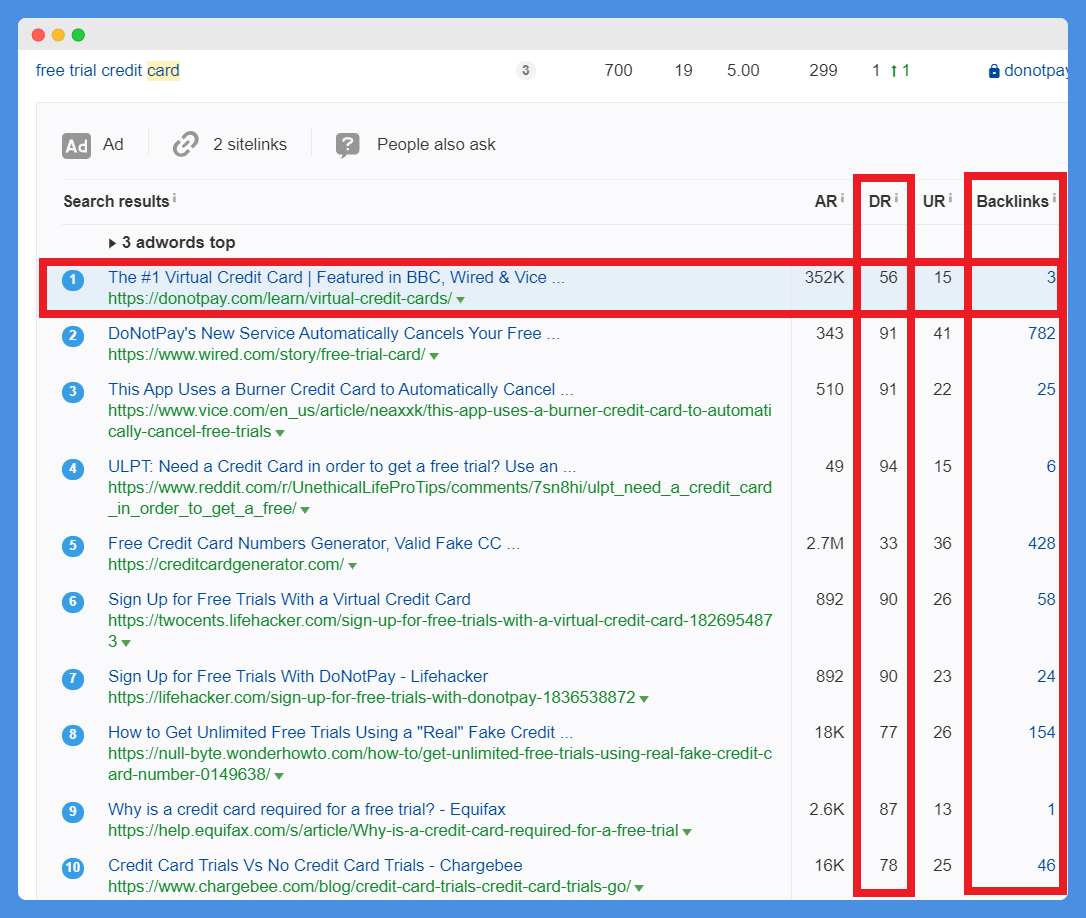

And when backlinks are needed to get the outcome you desire, you need less to get there.
Keyword Research for affiliate SEO could be a lot better
Whether you know it or not, keyword research for affiliate SEO could be better.
- Performing quality keyword research requires high levels of skills and experience
- Keyword research strategies rely heavily on gut feelings and intuition, and mistakes are likely to happen
- It’s a manual process that takes a long time to do
- Experienced SEOs have a difficult time delegating high-quality keyword research to junior team members
- Inexperienced affiliate SEOs know how important keyword research is, and stress about whether they did it right, or wasted their investment
When you Google keyword research there are 400 million results.
When you google affiliate keyword research there are more than 6 million results.

So who do you listen to?
- Ahrefs?
- Moz?
- SEMRush?
- Yoast?
- HubSpot?
- Neil Patel?
- Brian Dean?
All we see is 6 million opinions.
And no one using data.
[optin-monster slug=”ewkbrxc1xmprofomyqkf-2″]
ClusterAi in action
ClusterAi is a better way to do keyword research.
It uses data from Google to determine which keywords can rank together.
It allows us to do a year’s worth of keyword research in minutes.
And I’m going to show you how in two minutes with two examples.
DIY affiliate keyword research
Alright, let’s pretend we’re starting an affiliate site in the pet niche.
- We used Ahrefs Keyword Explorer to look up dog
- Then we used the ‘Having same search term feature’
This discovered 10,000,000+ ways people are using dog in their searches.
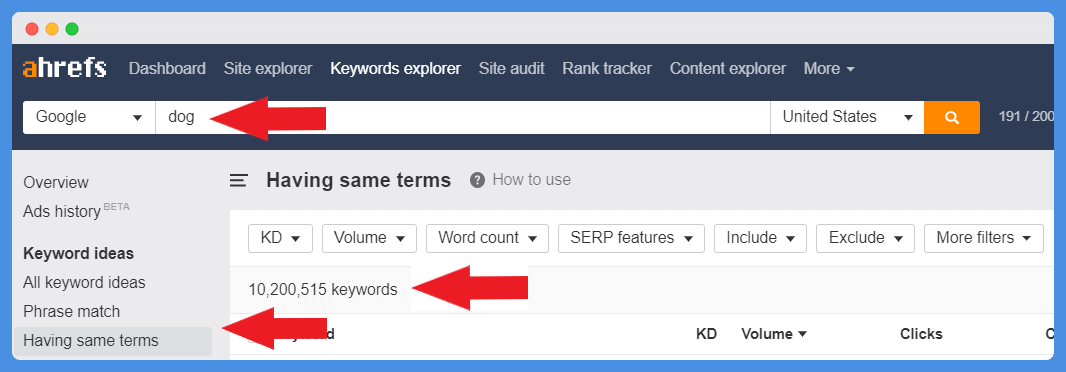
Still looking for the best SERP tracking tool for you? Check our complete list.
We want to get more specific, so we filter down to just people searching for:
dog + food
This generates a list of 455,000 variations in the way people are searching for dog + food

We exported the top 25,000 keywords by the search volume.
Then we imported these 25,000 keywords into ClusterAi.
ClusterAi grouped that list of 25,000 keywords into unique content topics.
It shows us the data by:
- Main keyword. This is the keyword in a group with the most volume.
- Total search volume for every keyword in the group.
- The variations that can rank with the main keyword.
To see the full list of variations, click on any cell.
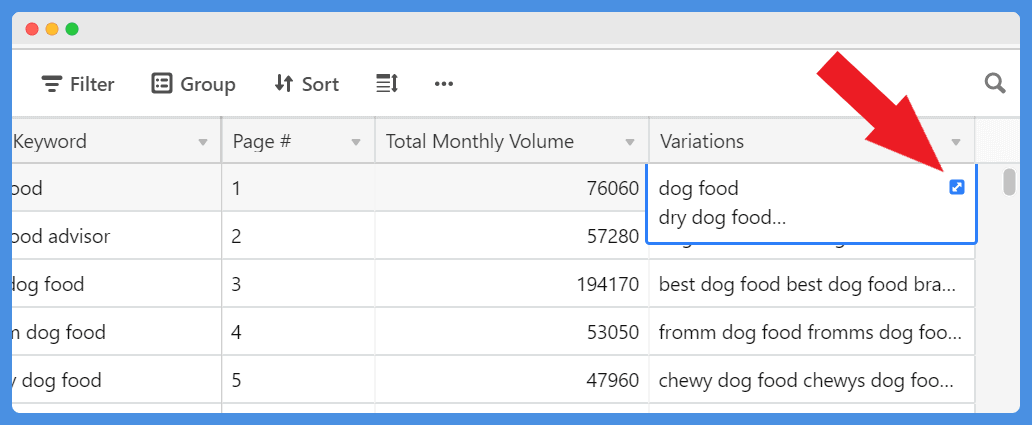
Then click the icon in the right-hand corner to expand it.
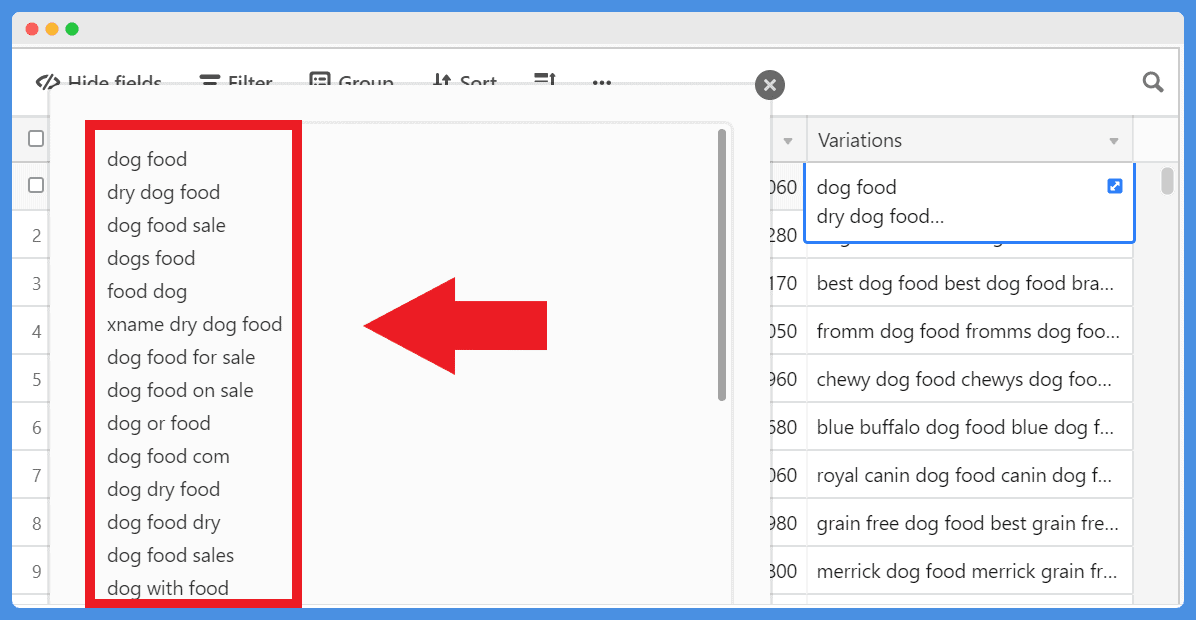
That’s literally it.
We just did 1,000+ pages of keyword research.
We mapped every keyword variation on every single page.
And we did it perfectly in literally minutes.
- We didn’t need extensive SEO experience
- We didn’t need to spend weeks slaving away
- We didn’t need to make gut decisions on keyword variations
- We didn’t need to second guess our keyword research decisions
DIY affiliate keyword research
Let’s pretend we’re starting an affiliate site in the DIY niche.
- We used Ahrefs Keyword Explorer to look up DIY
- Then we used the ‘Having same terms feature’
This discovered 2,000,000 ways people are using DIY in their searches.
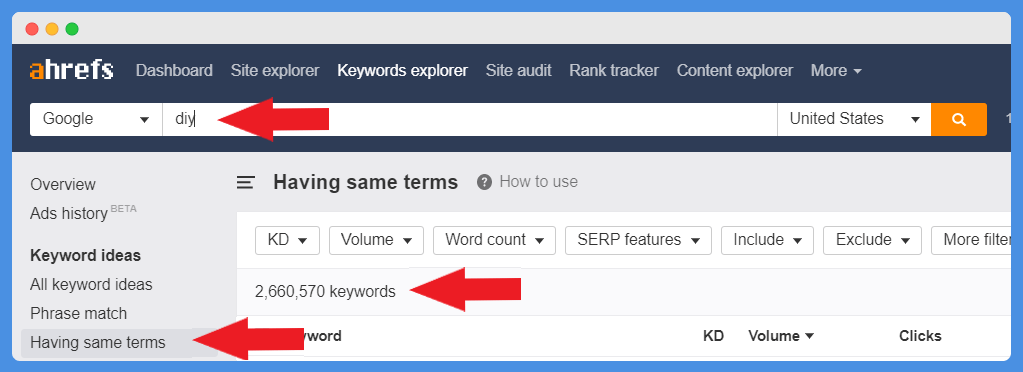
We exported the top 25,000 keywords by search volume.
Then we imported these 25,000 keywords into ClusterAi.
ClusterAi grouped that list of 25,000 keywords into unique content topics.
It shows us the data by
- Main keyword. This is the keyword in a group with the most volume.
- Total search volume for every keyword in the group.
- The variations that can rank with the main keyword
How ClusterAi works
I think you guys get the point.
So how does it work?
ClusterAi uses data from Google to determine which keywords can rank together.
No more using your gut and intuition.
After you import your list of keywords, this is what happened under the covers:
- ClusterAi scrapes the top 10 websites ranking for every keyword on our list
- Then it compares every keyword against every other keyword
- It looks for keywords that have URLs in common
- If ClusterAi finds 3 or more URLs that rank for a set of keywords, it groups those keywords together into unique content topics
This is as data-driven as it gets.
If 3 other websites can rank for this set of keywords with one page of content, we can probably rank for that set of keywords with one page as well.
But if ClusterAi compares a set of keywords, and those keywords have 2 or fewer results (URLs) in common, we probably can’t rank for that set of keywords with one page of content either.
And we’ll need to create two pages to rank for that set of keywords.
Doing this manually, at scale is impossible, and that’s why mistakes happen.
It’s not always intuitive which keywords can rank together, and which keywords can’t.
Keyword research isn’t intuitive & based on gut feelings
Let us give you a real-life example using two keywords.
- Linked Profile examples
- Linkedin Headline examples
To rank for both of these keywords, you need to create two pages of content.
One page about LinkedIn profiles, and one page about LinkedIn headlines.
If you try and rank for both keywords with one page, you won’t rank for either.
How do we know?
Because we Googled it.
The search results are completely different, even though these seem like related keywords.
If you were writing an article on LinkedIn profiles you might optimize your article for both.
But if you did, you wouldn’t rank for either LinkedIn profiles or LinkedIn headlines, because there isn’t a single website that ranks for both keywords with one page.
The pages Google shows for LinkedIn Profiles are all 100% optimized for LinkedIn profiles.
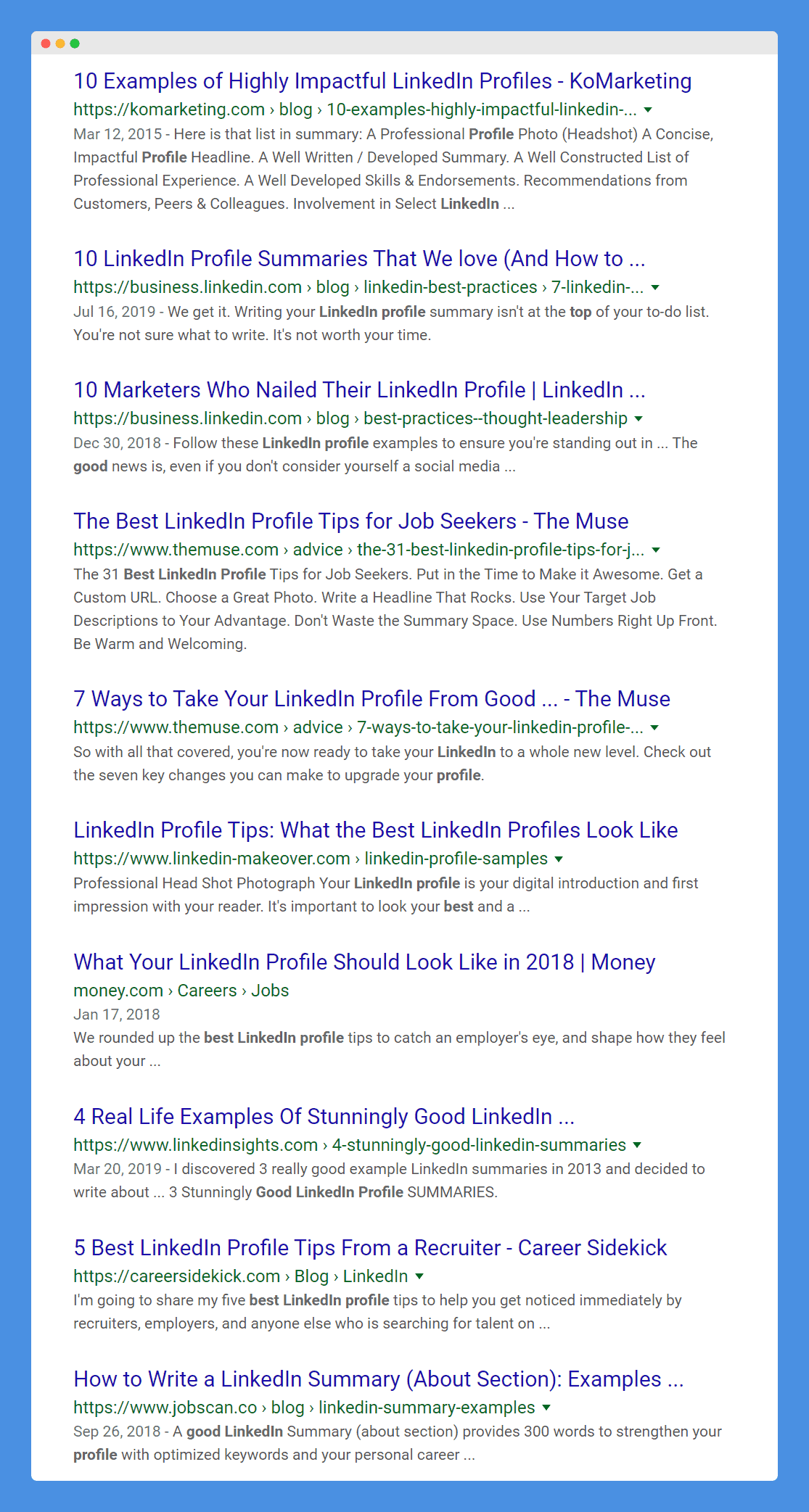
And the pages Google shows for LinkedIn headlines are all 100% optimized for LinkedIn headlines.

Now multiply this effort across every keyword on your list.
Comparing every keyword against every other keyword manually is impossible.
That is why affiliate SEOs developed shortcuts and heuristics that are ultimately based on intuition and gut feelings.
And when you make decisions based on intuition you make mistakes.
The content calendar for your affiliate site is bigger than you think
Want to know what every single top affiliate SEO site has in common?
Boatloads of content.
Don’t believe us?
Let’s look at the pet space.
We analyzed all of the top dog publishers.

Column E is the publisher’s efficiency score.
This is the total traffic divided by the total number of pages.
Every top publisher generates between 170 to 870 visitors for every page of content on their site.
There is no publisher generating 80% of the traffic with 20% of the pages.
Quick side note – take a look at pet website #11, Doggypedia.org.
Doggypedia is a site we referenced at the beginning of the article, one of the projects we took from 0 to 100,000 organic visitors per month in 11 months.

We competed with the top publishers in the pet space, with a smaller budget and fewer backlinks.
One of the core reasons we were able to punch above our weight is because of ClusterAi.
We were more relevant for the content we wanted to rank for.
And if you know how Google actually works, you know that being more relevant can help you rank with fewer backlinks.
Here are a couple of other notable examples:
CreditKarma.com generates an insane 7,768,000 organic visitors per month.
But they published 24,660 pages.
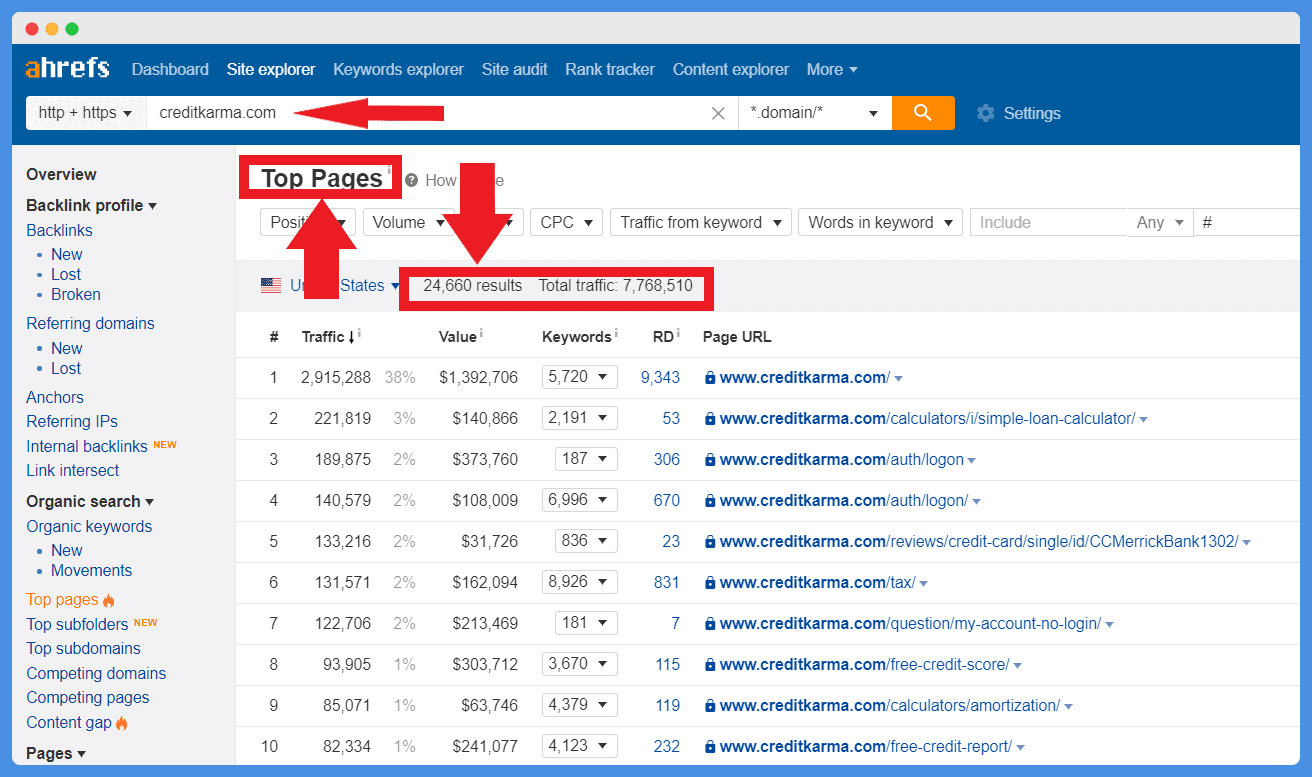
NextLuxury.com is an affiliate site in the fashion niche generating 1,345,000 organic visitors each month.
From 13,453 pages.
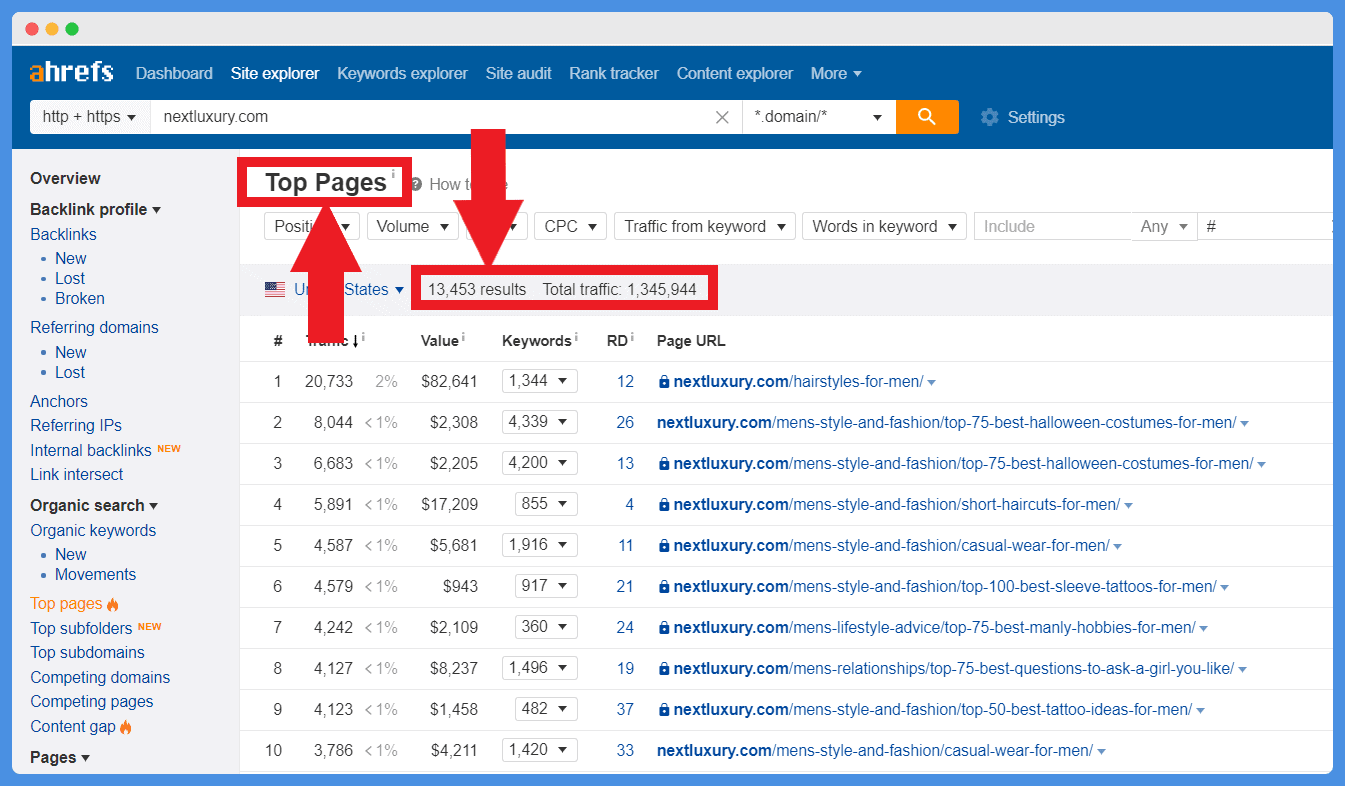
How much time and money do you think these sites spent:
- Mapping out 10,000 – 20,000 unique pages of content
- Doing keyword research on a page by page basis
Hundreds, and hundreds, and hundreds of hours.
Forecasting costs and ROI
ClusterAi’s groupings make forecasting costs and ROI really simple.
Referencing our dog food keyword groupings above, the top 299 pages represent approximately 2,946,000 searchers per month.
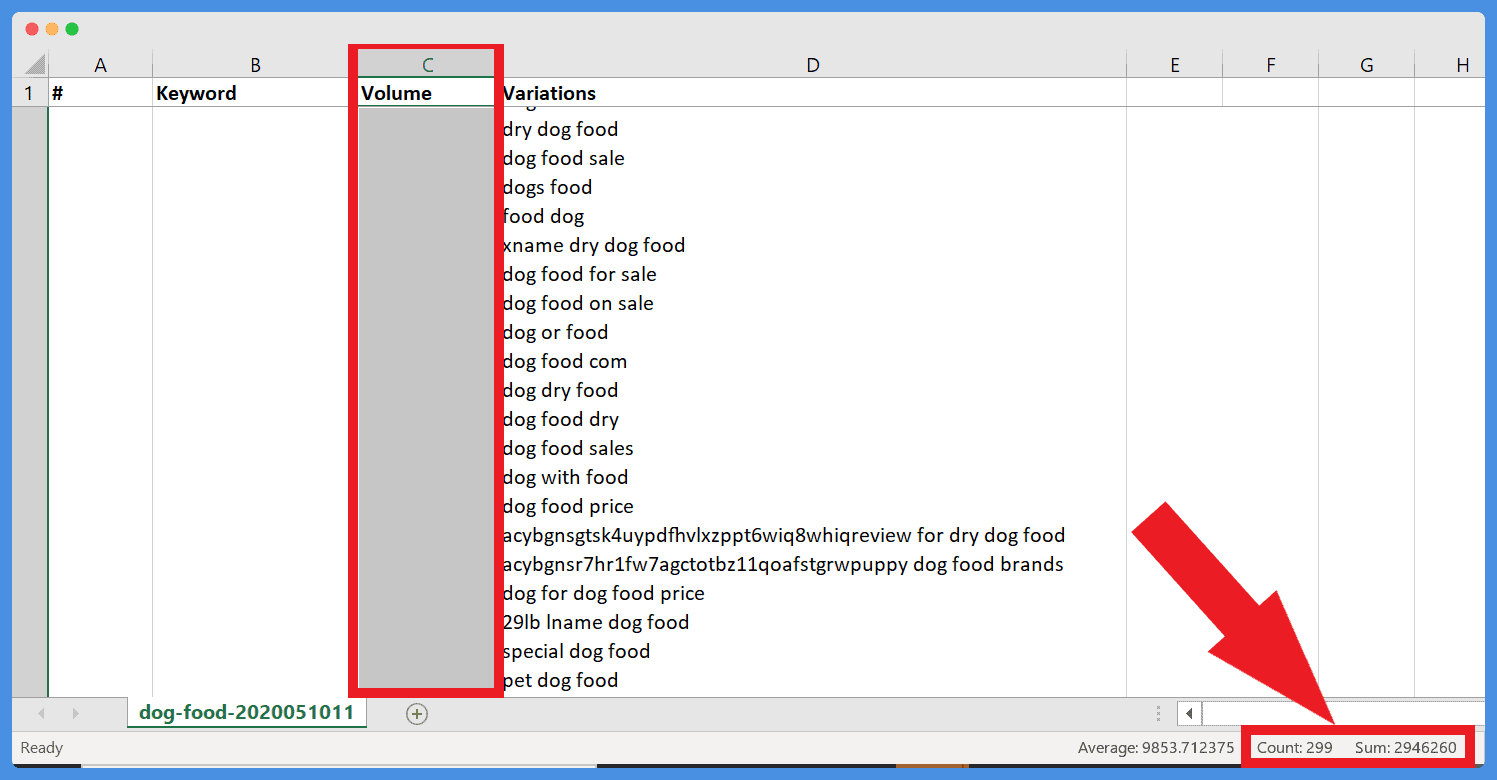
Now we can sanity-check our costs against income on varying levels of success.
Here the variables we need to decide:
- What % of the searchers can we capture?
- How many searchers will click an affiliate link?
- What % will purchase?
- What is our average payout?
We built a guide walking through each of these variables, and build an automated calculator to help you estimate varying outcomes on your affiliate SEO investment.

Get our guide and SEO ROI calculator here.
Turning any writer into an Affiliate SEO writer
The rankings and traffic you saw at the beginning of the article were not written by SEO content writers.
Those articles were written by good writers that we turned into SEO content writers.
Regardless of whether the writers we work with know SEO, we need their content to rank.
So we’ve created systems to enable writers without our background to create outcomes as successful as we could create ourselves.
We provide our writers with:
- Everything they need to know about the project and target audience
- Our writing standards (that have gotten us 65,000 page-1 keywords without building backlinks)
- A list of all the variations they should use within their content
Writer instructions:

Keyword variations from ClusterAi are provided in the Google Doc:

Get the exact template we use to turn any writer into an SEO content writer producing content that naturally ranks
Working on other projects?
ClusterAi automates keyword research for every vertical and niche.
Check out our example of keyword research for:
- B2B SaaS keyword research
- B2C SaaS keyword research (coming soon)
- E-commerce keyword research (coming soon)
Our best content
Want to learn how we’ve grown 4 websites from approximately zero to 100,000 visitors per month, with the biggest one doing 500,000 in just 17 months?

We share it all.
- How Google actually works (based on 65,000 page-1 keywords)
- How to find and hire the highest quality, most affordable writers on the internet
- How to turn any writer into an SEO content writer
- Forecasting SEO ROI
- How we crush B2B SaaS SEO
- How we crush B2C SaaS SEO
- How to rank without backlinks
- Brand Jacking (ranking for your competitor’s brands)
- The #1 lever to get the fastest SEO results
- The greatest SEO case study of 2020: 0 to 479,000 monthly organic in 16 months



